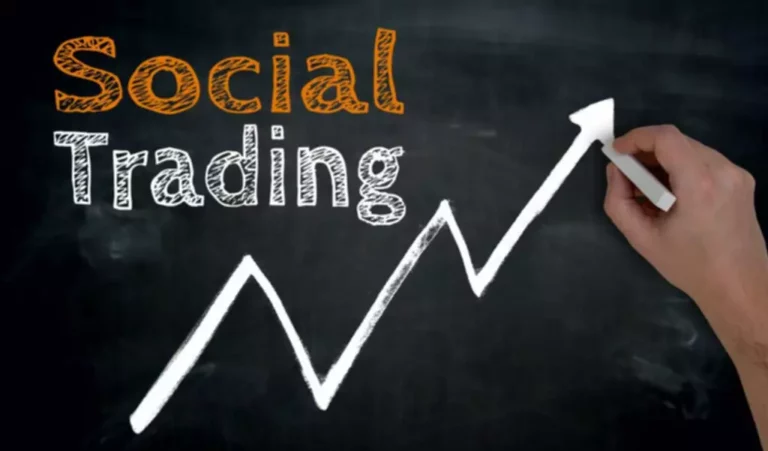Buy-side Vs Sell-side Analysts: Whats The Difference?
From the buy-side, that’s one thing to focus on and for which to arrange. Once the chance has been rigorously thought of by the firm’s analysts and offered to the board, a decision is made to acquire numerous IPO shares. This purchase of securities ensures a cash move from buy-side to sell-side and helps set the IPO in movement. The worth of personal fairness capital has been growing, and amounted to $2.3 billion worldwide as of 2022.
Space infrastructure company Maxar was purchased in one other all cash deal, with shares going for 130% over asking costs. Buy-side and sell-side in mergers and acquisitions focus entirely on discovering the alternatives for M&A transactions. The buy-side finds probably the most helpful opportunities for the client, and the sell-side—for the vendor. On the opposite hand, the sell-side refers to the entities which would possibly be concerned within the means of sale. Sell-side corporations work with sellers and try to find a counterparty for a sale of the client’s business—the purchaser. By contrast, most “Public Markets” roles require a sharper however narrower talent set, so the exit opportunities are additionally more specific.
How Much Do Buy-side Analysts Make?
People always concentrate on the reality that the ceiling is way greater in buy-side roles since you might seize some of the upside in deals or investments that perform nicely. In sell-side roles, many of the stress comes from responding to shoppers and other bankers and juggling the pitches, ongoing deals, and “random requests” that come in. On the second point – “misfits” – company finance professionals at regular companies don’t increase or invest cash and don’t cost commissions. The sell-side of the monetary market is responsible for creating, promoting, and promoting traded securities to most of the people.
- Professionals on the buy aspect sometimes work in portfolio management, wealth administration, private equity, hedge funds and typically venture capital.
- The buy-side can utilize M&A software program like DealRoom or different knowledge rooms to handle the diligence course of for the entire lifecycle.
- Sell-side analysts are those that concern the often-heard recommendations of “sturdy purchase,” “outperform,” “neutral,” or “promote.” These suggestions assist shoppers make selections to buy or promote sure stocks.
- When you’re considering a sell-side advice, it’s essential to determine whether or not the advice suits your individual funding style.
The sell side handles all actions associated to promoting securities to the purchase side. That can embrace underwriting for preliminary public choices (IPOs), providing clearing companies, and creating analysis materials and analysis. They make investment selections and handle their purchasers’ money, and do their greatest to develop the firm’s portfolio. Sell-side analysts are those that issue the often-heard suggestions of “sturdy buy,” “outperform,” “impartial,” or “sell.” These recommendations help shoppers make selections to purchase or promote certain shares.
Do You Own A Business?
Asset Manager A is a buy-side firm that manages a portfolio of securities on behalf of its purchasers. On the sell-side, Broker B provides market providers, corresponding to access to the stock change. Buy-side companies make money by buying what is buy side and sell side low and selling high commerce activities.
For now, the only factor your eally need to take away is that the buy facet works instantly with one of a number of promote aspect members to take a position pools of cash massive and small. You won’t are probably to find a hedge fund that’s pitching an M&A opportunity or one that’s implementing the M&A, for example. Discover the difference between buy-side and sell-side, including buy-side vs. sell-side due diligence. What are the primary differences between buy-side and sell-side M&A activities? Finance specialists define the sell-side and buy-side as totally different parts of the M&A process, practically, the difference between them isn’t that strict but somewhat conditional. They analyze reviews made by the sell-side and make their own research based on it.
Examples embrace every little thing from pension funds to mutual funds, venture capital, personal equity, and past. Buy-side and sell-side players, together with investment banks, rely on a virtual knowledge room software to organize digital files, securely share info and provide a private repository for M&A due diligence. The buy-side vs. sell-side distinction in M&A refers to companies that promote or buy products like stocks and bonds.
There are distinct roles for the buy-side vs sell-side within a monetary sector. The buy-side manages a unique business’s potential investment selections concerning its corporate finances, such as buying pension funds, hedge funds, real property, and different assets. The major difference between buy-side and sell-side analysts is their clients Smart contract. Analysts behind the scenes often play a crucial position when a company’s inventory soars or plummets. Buy-side and sell-side analysts share the aim of analyzing securities and markets, however their incentives and audience imply that their outcomes will usually differ. A sell-side analyst is employed by a brokerage or agency that handles particular person accounts, providing suggestions to the firm’s purchasers.

On the opposite side, buy-side companies use sell-side providers to make investments. Hedge funds, asset managers, and pension funds are typical examples of funds that purchase or sell securities in the hope of incomes a profit. JPMorgan Chase, Goldman Sachs, and Morgan Stanley are examples of sell-side companies https://www.xcritical.com/. These corporations supply investment banking, gross sales, and buying and selling services to institutional and particular person shoppers. Investment analysis and evaluation are essential components of the finance industry.
For instance, an asset management agency runs a fund that invests the excessive internet worth clients’ money in alternative energy companies. The portfolio manager (PM) at the firm seems for opportunities to put that money to work by investing in securities of what he/she believes are essentially the most attractive corporations in the industry. One day, the VP of equity gross sales at a serious funding financial institution calls the portfolio manager and notifies them of an upcoming initial public providing (IPO) of the company in the various energy area. The sell-side is often represented by investment banks, industrial banking establishments, advisory corporations, and inventory market brokerage corporations. Sell-side analysts, investment bankers, and stockbrokers help their shoppers in raising capital by promoting securities. Sell-side research analysts are integral to funding banks, brokerage companies, commercial banks, corporate banks, and Wall Street trading desks.
The Sell-Side largely consists of banks, advisory companies, or other corporations that facilitate the selling of securities on behalf of their clients. Buy-side analysts typically classify undervalued securities to add to their shopper’s portfolios. They analyze firms and industries to identify funding alternatives to generate long-term returns for their purchasers. The major variations between buy-side and sell-side analysts relate to the sort of analysis they do. Buy-side analysts conduct broad analysis that often makes use of information from trusted sell-side analysts to make investment recommendations.

Buy-side analysts will decide how promising an investment seems and the way well it coincides with the fund’s funding strategy; they’ll base their suggestions on this evidence. These suggestions, made exclusively for the benefit of the fund that pays for them, usually are not available to anybody outside the fund. If a fund employs a great analyst, it does not need competing funds to have entry to the identical advice. A buy-side analyst’s success or expertise is gauged by the number of worthwhile suggestions made with the fund.